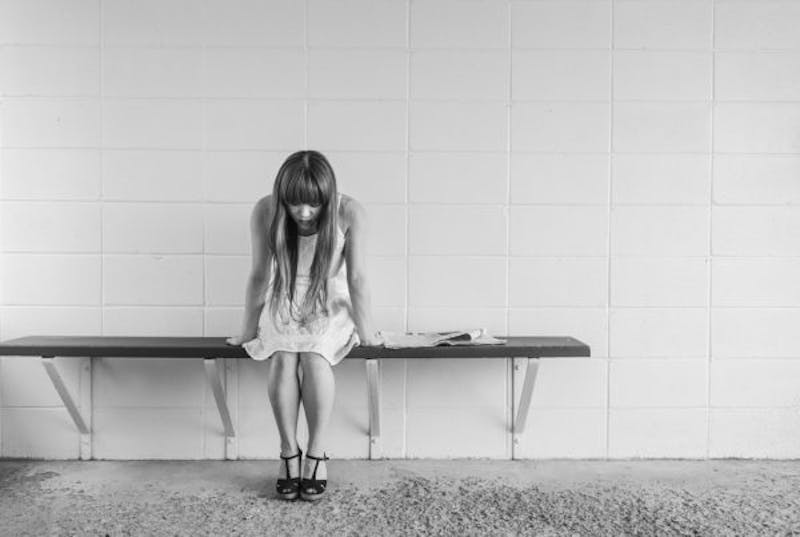
Depression is a common yet serious medical illness that negatively affects how you feel, the way you think, and how you act. I want to repeat that- depression is a medical condition. Often people have misperceptions as to what having depression or any other mental health issue means in terms of their sense of self and how others may perceive them. Depression requires both an understanding of the illness and medical care like any other medical illness. If left untreated, depression can be devastating for those who have it as well as to their families and friends and episodes can last from months to years.
That is a long time to be suffering from an illness that we can treat.
With early detection, diagnosis and a treatment plan that may include medication and therapy, many people do get better and depression is treatable. Depression can often lead to a variety of emotional and physical problems and can decrease a person’s ability to function at work and at home. Some people will only experience one depressive episode in their lifetime but for the majority, depression may recur.
Thinking of depression as being on a spectrum can be helpful. The spectrum can vary depending on the severity of symptoms from mild to severe. Some people may have a situational or reactive depression such that they experience depressive symptoms in response to a stressor or life event.
Examples of such stressors or life events may be a death in the family, divorce, or disappointment for not being selected for a job. However this only takes into account the psychosocial perspective in terms of the development of depression.
Thus, depression and mental health issues are viewed by clinicians from a biopsychosocial model which takes into account one’s biological, psychological and social perspectives when considering treatment and prognosis as often those suffering from depression may not have a specific stressors or event that triggered their symptoms. It is the use of this model that helps us better understand the complex nature of depression and its cause(s). Some people may have depression that has a biomedical root in which there is a disturbance in the functioning of the brain.
Regardless of what causes/contributes to one’s depression, symptoms of depression may include:
– Changes in appetite or weight (both increased and decreased)
– Changes in sleep
– Fatigue
– Difficulty concentrating
– Feelings of guilt or low self-worth
– Suicidal thoughts or intentions
– Loss of interest in activities you once enjoyed
– Decreased energy
– Feeling agitated or feeling slowed down
Physical symptoms can often be the initial sign of depression as some people who are suffering from depression often present with complaints such as back pain, lethargy or headaches. Often people present to their primary care physician with physical complaints that are not “in their head.” They often are not able to identify what they are going through as actual depression. Depression can cause real changes in your body which makes you feel physically unwell. For instance, depression can slow down digestion, which can result in stomach problems. Alternatively, chronic pain can cause several problems that can lead to depression such as trouble sleeping or limitations to your ability to physically do the activities they once enjoyed.
The relationship between depression and pain is one that is closely linked. Depression can cause more pain and the stress of living with pain can cause you to feel more depressed. Studies have shown that those that are depressed and suffering from chronic pain when compared to their non-depressed counterparts reported greater pain intensity and greater interference due to their pain. Untreated, depression and pain can exacerbate the other making treatment more challenging at times.
Treatment for co-occurring pain and depression may be most effective when it involves a combination of treatments. Multiple studies have found that antidepressants provide effective pain relief in neuropathic pain conditions and may be effective in painful conditions such as fibromyalgia, chronic low back pain and pelvic pain. Some of these antidepressants may provide pain relief separate from their antidepressant effects. Analgesic effects appear to occur earlier (as early as after about a week of initiation of treatment) and at lower doses than for antidepressant effects to be present. For the antidepressant to help with depression, this often requires several weeks.
Treatment of pain and depression may also include psychotherapy. People with chronic pain may resist the possibility of exploring that their pain may also have an emotional root. Confronting the deeper emotions may seem daunting. There are different types of therapy that may be effective in helping with pain which may include biofeedback, cognitive behavioral therapy or a combination with use of muscle relaxation techniques. With biofeedback, the clinician uses a wide variety of specialized equipment depending on the physiologic functions being monitored. The sensors are placed by the therapist and will send electrical signals to a display monitor which is visible to the patient and therapist. The data received is sent back to the patient in the form of flashing lights, images, or sounds, each of which corresponds to a specific physiological activity. The individual then learns how to adjust bodily reactions by changing thoughts, mood, or behavior based on the information from the data that is received back by the sensors. Cognitive behavioral therapy, also known as CBT, has been shown to be effective in treating chronic pain by helping to recognize the relationships among your thoughts (cognitions) feelings (or emotions), and behaviors. Thoughts, feelings and behaviors are intertwined and therefore in this type of therapy, working to identify each of these components and how they relate to each other is integral to the problem-solving approach of DBT to cope with challenges associated with chronic pain.
Dealing with both chronic pain and depression may seem daunting, but thankfully with the right treatment, there is help so seeking out treatment early is key.
Written by: Diana Samuel, MD (NY based psychiatrist and mental health advocate)

